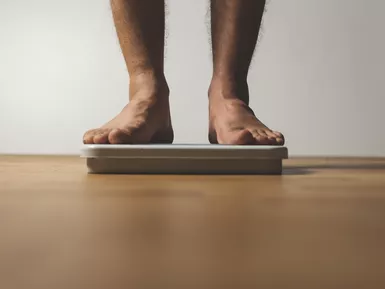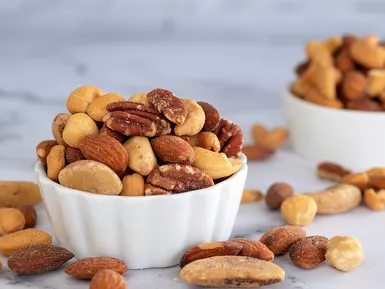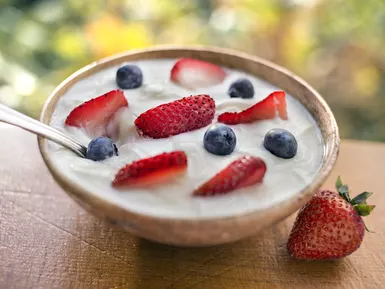How Fast Can a 250-Pound Person Healthily Lose 10 Pounds? A Compassionate and Realistic Guide

How Fast Can a 250-Pound Person Healthily Lose 10 Pounds? A Compassionate and Realistic Guide
Embarking on a weight loss journey is a significant and personal decision, and if you're around 250 pounds and aiming to lose 10 pounds, please know that this is an absolutely achievable and commendable goal! It’s a journey that requires patience, commitment, and a well-planned, kind approach to yourself. The rate at which you can healthily lose those 10 pounds will depend on several individual factors, and we're here to explore them with you.
Understanding the Fundamentals of Healthy Weight Loss
At its core, weight loss occurs when you consistently create a calorie deficit, meaning you burn more calories through your daily activities and bodily functions than you consume through food and drink. It's often cited that one pound of body fat is approximately equivalent to 3,500 calories. Therefore, to lose 10 pounds, a cumulative deficit of around 35,000 calories would be needed over time.
But it's so much more than just numbers!
Your Metabolism: Your Body's Unique Energy Engine
Metabolism is the incredible process by which your body converts the food you eat into the energy it needs to function. A higher metabolism means your body burns more calories, even when you're at rest. Several factors influence your metabolic rate, including:
- Age: Metabolism naturally tends to slow down slightly with age.
- Gender: Generally, men tend to have a higher metabolism than women due to differences in body composition.
- Muscle Mass: This is a big one! Muscle tissue is significantly more metabolically active than fat tissue.
- Genetics: Your genes also play a role.
For someone around 250 pounds, one powerful way to positively influence your metabolism is by increasing muscle mass through strength training. Building muscle not only helps you feel stronger and more capable but also turns your body into a more efficient calorie-burning machine throughout the day, even when you're not actively exercising.
Nourishing Your Body: Diet and Nutrition for Sustainable Weight Loss
A balanced, enjoyable, and sustainable approach to nutrition is absolutely crucial for healthy weight loss. It’s not about deprivation, but about smart, satisfying choices. Here are some guiding principles:
- Mindful Calorie Awareness (Not Strict Restriction):
- Understanding your approximate daily calorie needs is a helpful starting point. A person weighing 250 pounds who is relatively sedentary might need around 2000-2200 calories per day just to maintain their current weight.
- To encourage weight loss, a gentle deficit of 500-750 calories per day is often recommended. This might mean aiming for an intake of around 1500-1700 calories daily. This approach could lead to a healthy and sustainable weight loss of approximately 1-2 pounds per week. Always listen to your body and ensure you're feeling energized, not deprived.
- Focus on Nutrient-Rich Macronutrients:
- Protein Power: Prioritize protein-rich foods. Protein is essential for preserving (and building!) precious muscle mass during weight loss, and it also helps you feel fuller for longer. Excellent sources include lean meats (chicken, turkey), fish, eggs, dairy products (like Greek yogurt), legumes (beans, lentils), tofu, and nuts/seeds.
- Complex Carbohydrates for Sustained Energy: Choose whole, unprocessed carbohydrates like whole grains (oats, quinoa, brown rice), fruits, and vegetables. These provide sustained energy and valuable fiber.
- Healthy Fats for Satiety and Health: Incorporate sources of healthy fats like avocados, nuts, seeds, and olive oil. Fats are important for hormone production and help with satiety.
- Embrace Portion Mindfulness:
- Become more aware of portion sizes. Using slightly smaller plates and bowls can be a simple visual cue to help manage the amount of food you eat.
- Tune into your body's hunger and fullness signals. Pause before automatically going back for seconds and ask yourself if you're truly still hungry.
- Limit Highly Processed Foods and Added Sugars:
- Highly processed foods (like chips, cookies, sugary cereals, fast food) are often packed with calories, unhealthy fats, and added sugars, offering little nutritional value.
- Gradually reduce your intake of these items and focus on whole, unprocessed foods as much as possible. You'll likely feel more energized and satisfied!
Moving Your Body with Joy: Exercise and Physical Activity
Combining a nourishing diet with regular, enjoyable physical activity can significantly accelerate your weight loss progress and boost your overall well-being.
- Cardiovascular Exercise (Cardio): Getting Your Heart Pumping!
- Activities like brisk walking, jogging, cycling, swimming, or dancing are fantastic for burning calories and improving heart health.
- Aim for at least 150 minutes of moderate-intensity cardio per week (that's about 30 minutes, 5 days a week).
- For a 250-pound person, starting with brisk walking for 30 minutes a day can be an excellent and accessible beginning. As your fitness improves, you can gradually increase the intensity, duration, or try new activities!
- Strength Training: Building Your Metabolic Engine!
- Incorporate strength training exercises 2-3 times per week, focusing on all major muscle groups. This can include lifting weights, using resistance bands, or performing bodyweight exercises like push-ups (on knees is a great start!), squats, and lunges.
- Remember, strength training not only helps build that calorie-burning muscle but also burns calories during and after the workout.
A Realistic and Kind Timeline for Losing 10 Pounds
A generally accepted safe, sustainable, and healthy rate of weight loss is 1-2 pounds per week. Therefore, for a 250-pound person aiming to lose 10 pounds, a realistic timeline could be approximately 5-10 weeks.
However, it's incredibly important to remember that weight loss is rarely a perfectly linear process.
- You might notice a quicker drop in weight initially, partly due to the loss of water weight. This is common and can be motivating!
- As your body adjusts to your new healthy habits, the rate of weight loss may slow down a bit. This is also normal and not a sign of failure! Stay consistent, and trust the process.
Navigating Common Challenges: Avoiding Pitfalls with Self-Compassion
- Steer Clear of Crash Dieting: Avoid severely restrictive or "fad" diets that promise rapid weight loss. These can lead to muscle loss, a slower metabolism in the long run, nutrient deficiencies, and are often incredibly difficult to maintain, leading to a cycle of yo-yo dieting. Focus on making long-term, sustainable changes to your eating habits that you can enjoy.
- Listen to Your Body with Exercise: While exercise is crucial, overdoing it (especially when starting) can lead to injury, exhaustion, and burnout. Tune into your body’s signals. Allow for adequate rest and recovery days between workouts. It’s okay to have easier days!
- Consider Gentle Progress Tracking (If It Feels Supportive): Keeping a simple record of your food choices, exercise, and how you're feeling (energy levels, mood) can be helpful for some. It can provide insights and help you stay accountable. However, if tracking becomes obsessive or stressful, it's okay to step back.
The Powerful Role of Your Mindset in Weight Loss
Losing weight is as much a mental and emotional journey as it is a physical one. Nurturing your mindset is key:
- Cultivate Intrinsic Motivation: Connect with your deeper "why" for wanting to lose weight. Is it for more energy to play with your kids or grandkids? To improve your health markers? To feel more confident? Set realistic, meaningful goals and find ways to stay inspired. This could be by celebrating small milestones (non-food rewards are great!), finding a supportive friend or family member, or joining a positive weight loss community.
- Nurture a Positive Body Image: Focus on how you feel – your increasing energy, your improved mood, your growing strength – rather than solely on the number on the scale. As you adopt healthier habits, you'll likely notice many positive changes in your overall well-being, even if the weight loss isn't as rapid as you initially hoped. Be kind to yourself.
- Practice Mindful Eating: Pay attention to your body's natural hunger and fullness cues. Eat slowly, savor your food, and minimize distractions during meals. This can help prevent overeating and foster a healthier relationship with food.
Conclusion: Your Journey to a Healthier, Happier You Starts Now
For a 250-pound person, losing 10 pounds is a wonderfully achievable and impactful goal. By embracing a balanced and nourishing approach to eating, incorporating regular and enjoyable physical activity, and tending to your psychological well-being, you can absolutely lose weight at a healthy, sustainable, and empowering rate.
Remember, your weight loss journey is unique to you. Be patient and compassionate with yourself, celebrate every small victory along the way, and focus on building habits that make you feel good from the inside out. Start by making one or two small, positive changes today. You are capable, and you deserve to feel your best!

5 Transformative Weight-Loss Resolutions for Success

Workout Routines & Beyond: Science-Based Weight Loss

Vitamin E and Weight Loss: Unveiling the Truth

Effective Strategies to Lose Midriff Fat for Women

8 Non-Scale Victories in Your Weight-Loss Journey

Unveiling the Ornish Diet: A Path to Sustainable Weight Loss

The Power of Social Support in Weight Loss

Personalized Weight Loss: 4 Strategies for Success

Long - Term Weight Loss: Maintaining Healthy Habits

